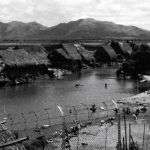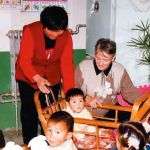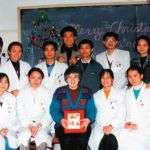
In response to the words of an old song, “Go Ye Afar,” on November 15, 1926, a group of five Columban Sisters arrived in Hanyang, China, and were soon busy with language study, setting up a house and responding to sick people who came to the house for treatment. Hopes and dreams of developing ministries to the poor were soon shattered, however, by the tense political situation between the warlords, nationalists and communists in Hanyang, as well as campaigns against foreigners.
Only a year later, the situation in Central China deteriorated very quickly. When the Japanese massacred several Europeans, including some missionaries, foreigners were leaving on all available boats. As the situation worsened by the hour, the Columban Sisters were also forced to depart for Shanghai, less than five months after their arrival in Hanyang.
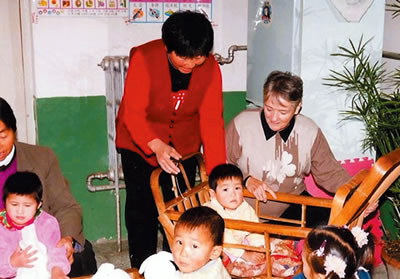
In a letter written on the riverboat carrying them to Shanghai, Columban Sr. Mary Patrick described how she felt. “How sad it was to ride down the main street of Hanyang in our rickshaws, to see the busy teeming population all intent on their business: the old banker with his nanny-goat beard and silver scales to weigh the silver ounces, the quack doctor with his Materia Medica, the tea houses with those quaint figures sitting at little polished lacquer tables sipping their bowls of tea or arguing over their games of Chinese chess. So many quaint houses and quaint scenes, down to the coffin house with gaily covered sarcophagi and the busy carver decorating these coveted caskets. The fish lay in baskets and boxes by the side of the road, men sat in chairs being shaved, women washing their babies; such a medley of people, in and out, jostling one another on the road. It was just the same as the day we came, and now we were going away.”
Fortunately, by Christmas the Sisters were able to return to Hanyang. They were still without a convent or dispensary. But, as soon as they heard the Sisters were back, the people began to arrive daily in huge numbers and so began the Sisters’ medical ministry — in a makeshift dispensary, serving the sick with whatever medicines could be found.
Altogether the Columban priests and Sisters sheltered and fed about eight hundred people from early August 1931 until the floods began to abate in mid- October 1931.
A few years later, the river Yangtse burst through a vital dyke protecting the city of Hankow and caused one of the worst natural disasters in history: the Central China Flood of 1931. Thousands of people were drowned and many more were left homeless. The Hanyang area, where the Columban Sisters lived and worked, was one of the places worst affected with the water rising to fifteen feet high. Refugees from the floods kept coming so that very soon the Sisters’ newly built convent, in which they had not yet lived, was accommodating more than three hundred refugee women, ranging in age from grandmothers to infants in arms.
The convent was a handsome three-story house fronted by wide verandas, never intended for the purpose to which it was now put, so it took some ingenuity to pack in three hundred people and feed them. At a later stage the building housed over four hundred women and children. Altogether the Columban priests and Sisters sheltered and fed about eight hundred people from early August 1931 until the floods began to abate in mid-October 1931.
In the years that followed, marked as they were by war, floods and epidemics, life in China was never easy for the Columban Sisters and culminated in their being among the foreigners who were expelled from the country in 1951. But our service to and with the Chinese people did not come to an end with this expulsion. Just before their expulsion, while visiting the Sisters in China and the Philippines, Sr. M. Vianney, the Congregational Leader at the time, had received an invitation for Columban Sisters to run a hospital for the treatment of patients with tuberculosis in Hong Kong.
In those early days, Sisters from various parts of the world came and gave great service in the Ruttonjee Sanatorium, gradually leading to the pioneering work of Columban Sisters M. Aquinas Monaghan and M. Gabriel O’Mahony. They both became famous for their treatment of tuberculosis which, with the huge influx of refugees from China, was rampant in Hong Kong at the time.
Over the years, our services in Hong Kong expanded to include teaching in two secondary schools as well as pastoral work in parishes and hospitals. Then, as 1997 approached and Hong Kong prepared to be once again part of China, the Sisters concentrated on preparing lay leaders in our various ministries which had continued to develop to include hospice care, prison visiting, as well as services to people living with HIV/ AIDS and to sex workers.
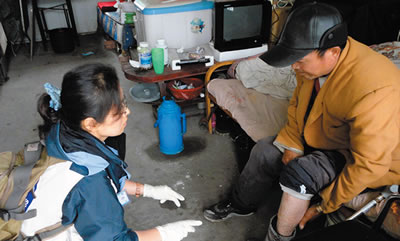
In the 1980s the Columban Sisters once again had the opportunity to serve in China, despite the fact that Chinese law prohibits any missionary involvement in the country. We began with teaching English in universities and medical establishments in various provinces. Gradually, we were able to expand our work to include services for orphans and children with cerebral palsy who had no hope of going to school.
We have also had the opportunity to help those affected by a devastating earthquake in Sichuan province — tending to those injured and participating in the training of local medical professionals. In this, we experienced a good spirit between international and local volunteers working well together under the umbrella of an international nongovernment office. With the skills of a qualified occupational therapist, the Columban Sister living there at that time was able to accompany earthquake victims, while witnessing the harshness of peoples’ lives.
We experienced a good spirit between international and local volunteers working well together under the umbrella of an international nongovernment office.
Today, the Columban Sisters’ presence continues in China so that in more recent years, we have been able to offer spiritual and psychological support to local Sisters, priests and seminarians, currently introducing them to Pope Francis’ famous encyclicals on the care of our Mother Earth — Laudato Si’ and Laudato Deum. This has awakened a deeper awareness in the local people of the urgent needs of our planet today and has led to parishes in rural areas planting trees in desert places and becoming involved in organic gardening.
Recently, two Sisters were also able to make a pilgrimage to Hanyang, our first mission. Through the years, the clinic which our first Sisters had set up in the 1930s has been put to various uses — at one point as hostel for local nurses and now part of the laboratory of a large hospital. Both the church, which Bishop Galvin, co-founder of the Missionary Society of St. Columban, had built and our old clinic building now bear plaques with a QR code detailing online the history of the buildings including the Chinese name of our Congregation and our mission. For us, it is an honor to be included in the heritage of the city, cementing our strong bond with the Chinese people which endures to the present day.
Sr. Ann Gray is from Scotland. She was a lay missionary in Sierra Leone before she entered the Columban Sisters. She has served on mission in Hong Kong and China. She is now based in Magheramore, Ireland, and is the Assistant Editor of The Far East magazine.
